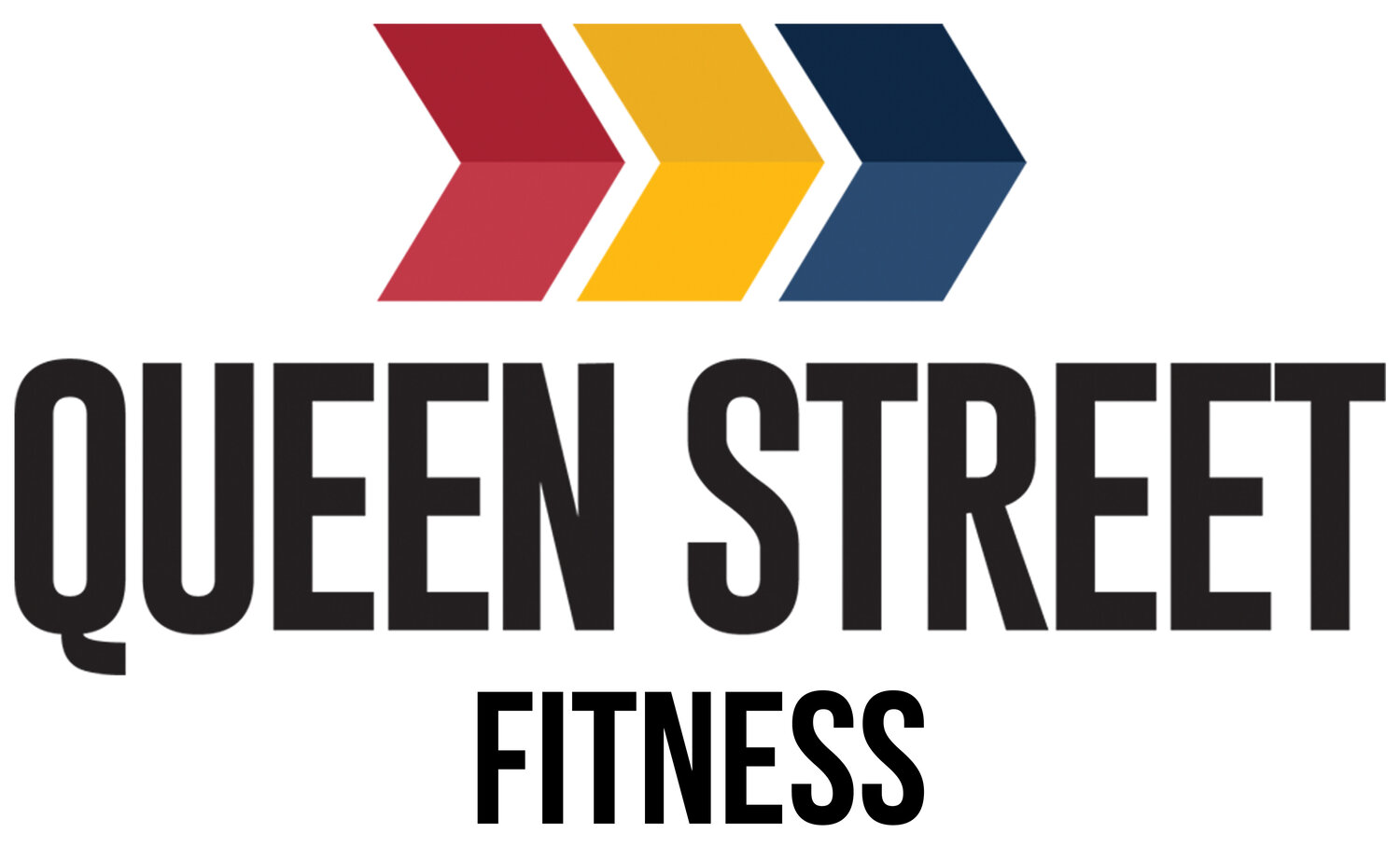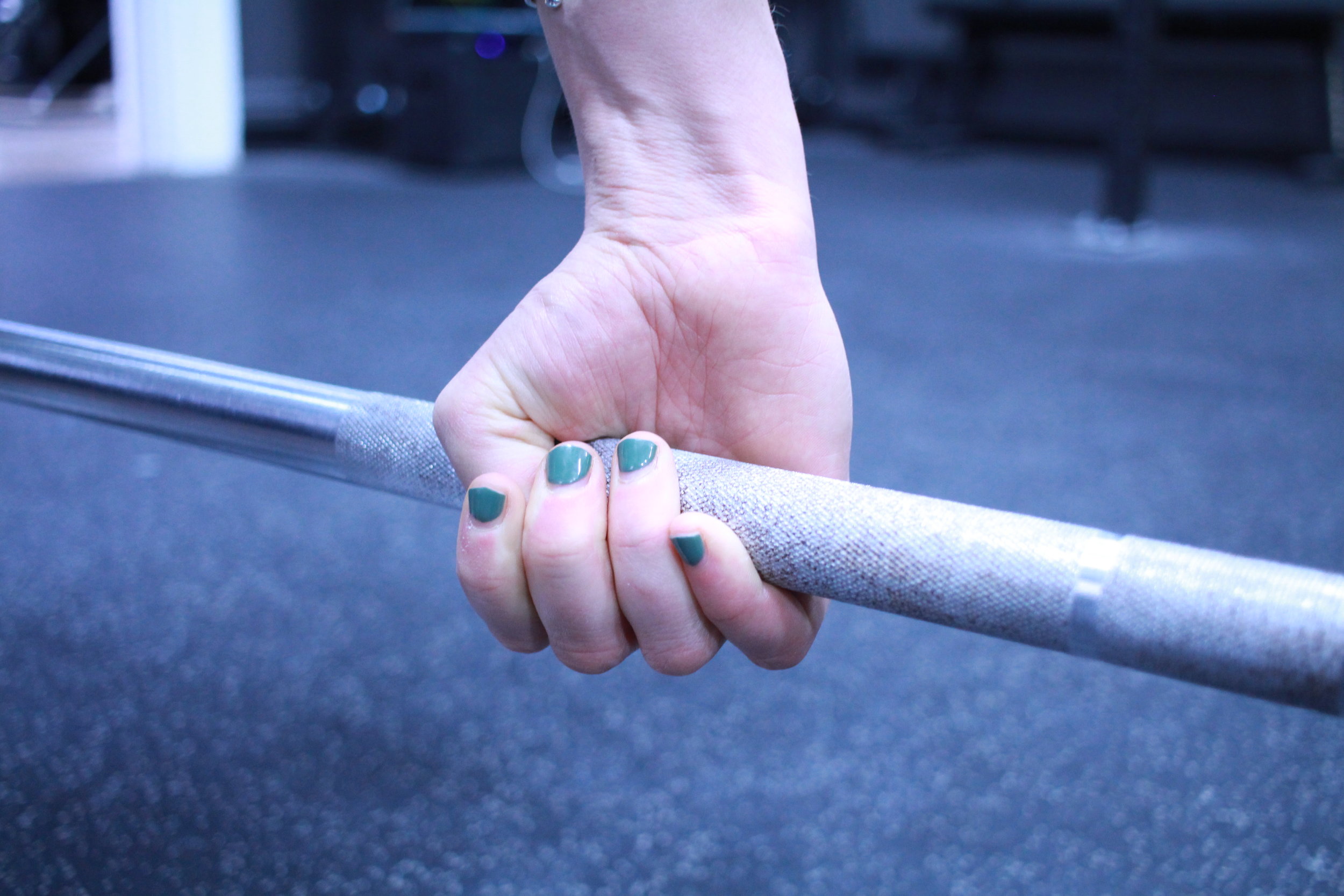One of the many benefits of a training program is the development of grip strength. In this email, we will briefly discuss the different ways we grip the pull-up bar and barbell, and how to care for your hands.
Gripping the Bar and Barbell
There are a number of different ways to hold on to the bar and barbell. Some ways change the muscle groups used, others help you keep a tight grip while allowing movement, and others can help avoid grip fatigue in a workout.
Overhand (Pronated)
A double overhand grip, or a pronated grip, is when you hold on to something with your palms facing away from you. We perform pullups, bar-muscle ups, bench press, deadlifts, and many other movements with a pronated grip in CrossFit.
Underhand (Supinated)
A supinated grip is when you hold something with your palms facing towards you. The supinated grip is less common in CrossFit, but has some useful applications in developing strength. With a pronated strict pull-up, you need to engage your back and lats more, and with the supinated you need to engage your biceps more.
Mixed Grip (one hand pronated, one supinated)
The mixed grip is just that, a mix of the two previous grips: one hand under, one over. It is most commonly used in deadlifting, as it keeps the barbell from rolling out of your hands in either direction. It also allows you to move heavy weight without fatiguing your forearms as much.
Hook Grip
The hook grip is what we use for the Olympic lifts and their variations (the snatch and clean and jerk). These lifts require you to move the bar fast. The hook grip allows for a secure grip even with high bar speed. This grip involves placing your thumb under your other fingers instead of wrapping it around the bar. The first two (or three) fingers thus hold the thumb and the barbell at the same time.
The hook grip can be challenging or uncomfortable for new athletes, however, it is worth it. Like anything, it gets better with practice, so if you find it uncomfortable, try it out with lighter weights first or by hanging from a pull-up bar to get used to the feeling of pressure on your thumbs.
Hand Care
Because of the amount of grip-intensive exercises we use in CrossFit, many athletes develop callouses on their hands. Sometimes during workouts with a lot of movement on the bar or rings (pull-ups, toes-to-bar, muscle ups), these calluses will tear.
Here are some tips to prevent hand tears:
Grip: How you grip the bar is important, try not to flail and create excessive friction with your hands.
Handgrips or Tape: Wearing handgrips or taping your hands can help prevent ripping as it minimizes the direct contact on the bar.
Less Chalk: It is possible that using too much chalk creates more friction and increases the chance of tearing. We sometimes recommend experiment with using less chalk and seeing if it makes a difference.
Moisturize: when your hands become dry, the skin gets taut on the surface and is much more susceptible to tearing if stretched. By moisturizing your hands, it will make your skin more supple (more susceptible to stretching) and less likely to tear under tension.
Callous shaver or Pumice stone: There are ways you can minimize callouses. To use a callous shaver, started by rinsing your hands in water to soften your skin, and then shave down the callouses. A pumice stone also works well to exfoliate the skin.
If you do get a bad hand tear that is bleeding, it is very important to clean the wound (alcohol or hydrogen peroxide) and treat it (polysporin works well) and cover with tape or a bandaid. We also recommend avoiding bar work until the tear heals. That doesn’t mean not coming to the gym, just asking your coach to help substitute with movements that will not aggravate the tear.






